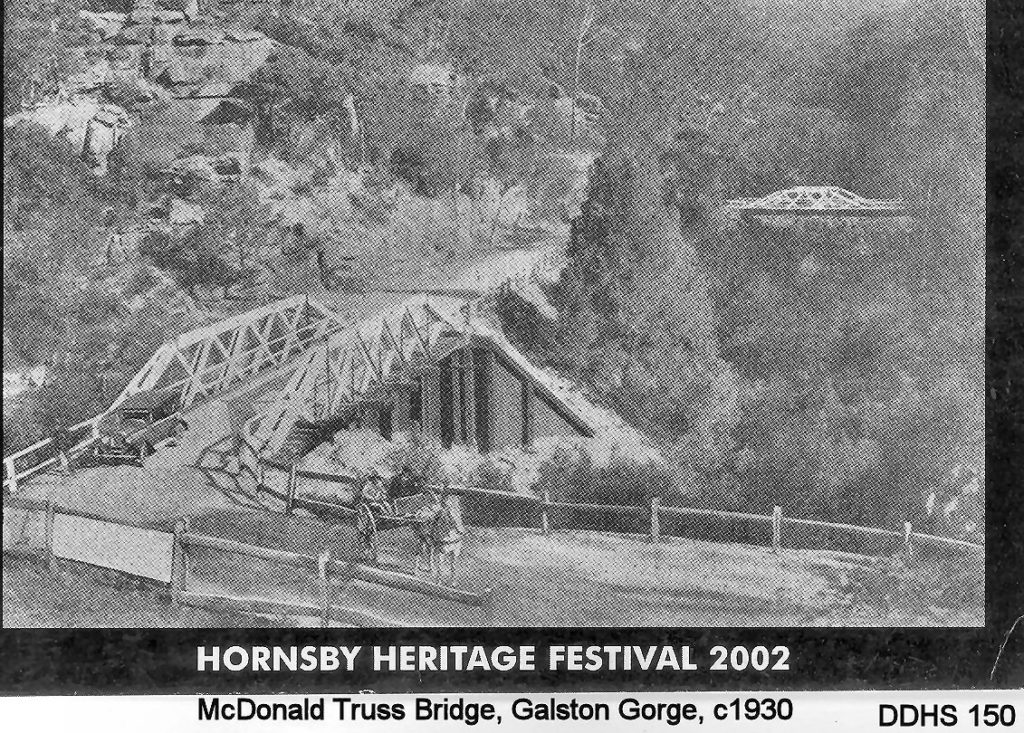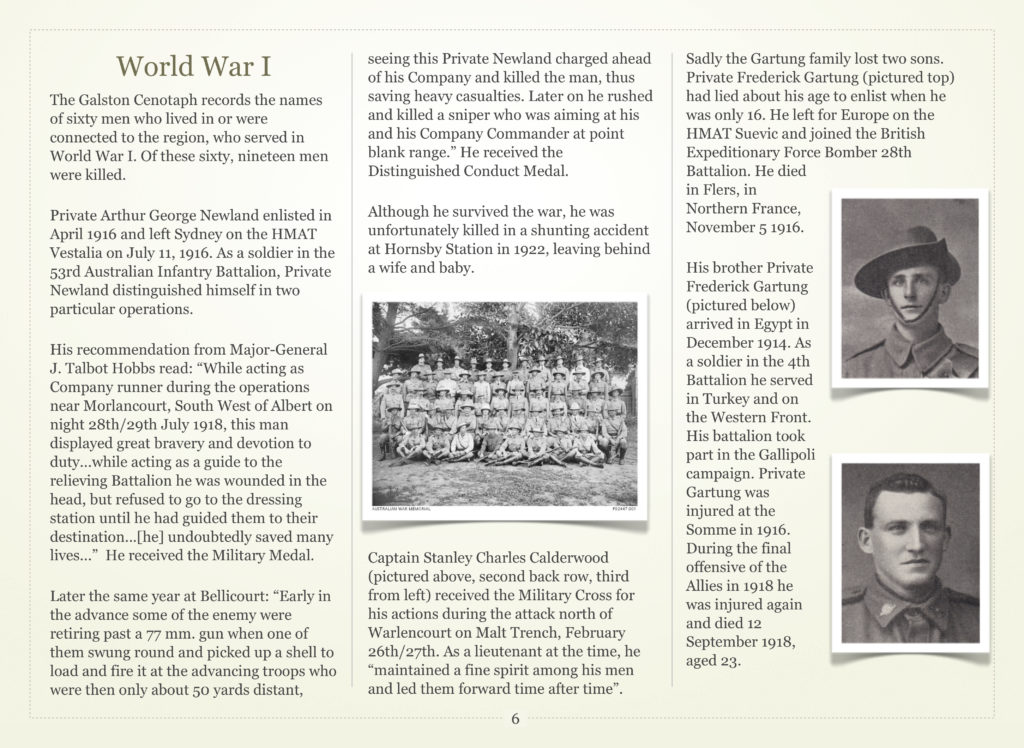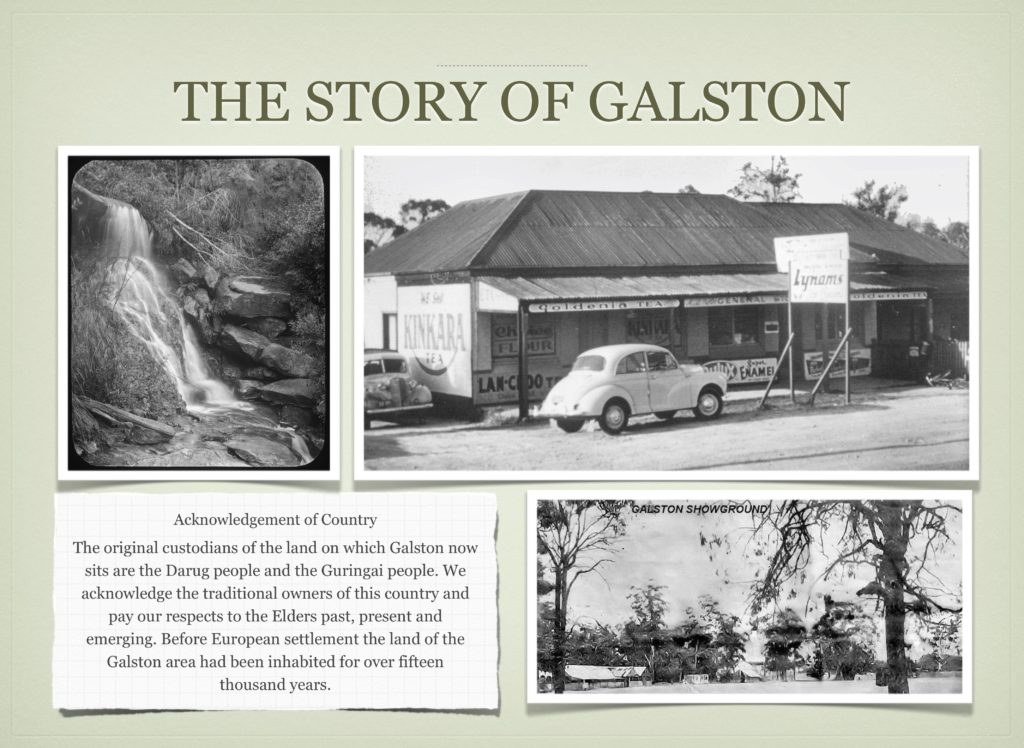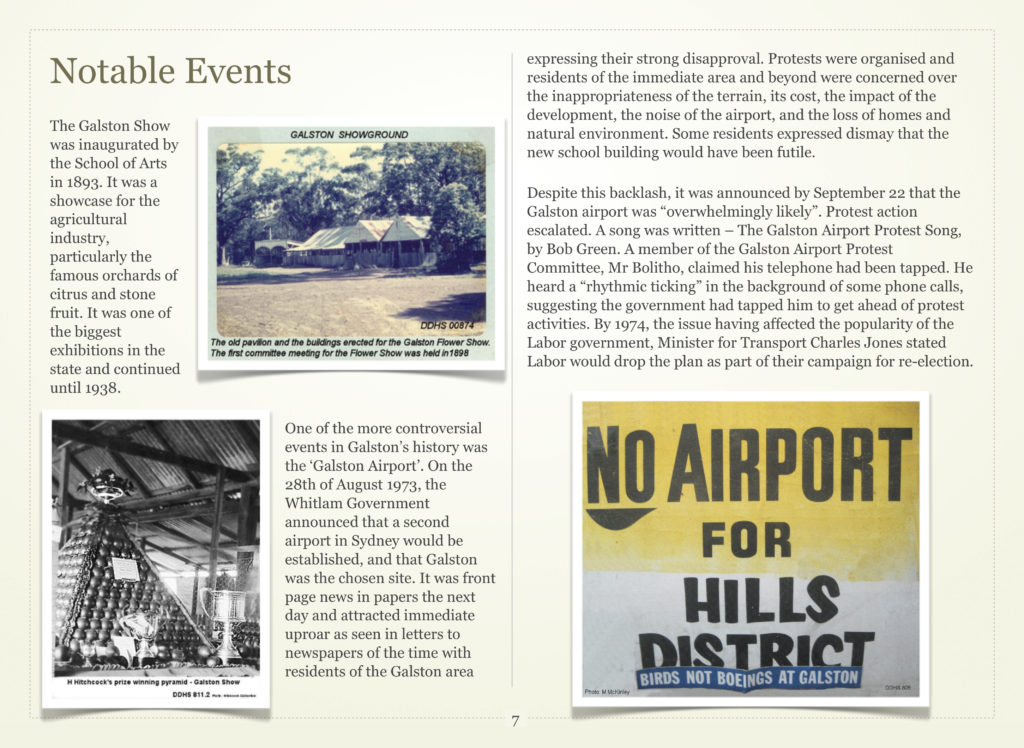Working with the Dural & District Historical Society to explore the history of Galston has certainly been eye-opening, and allowed me to discover the history that’s been practically in my backyard my whole life.

In order to respond to the increasing population and new residents in the town of Galston, located in the Hornsby Shire, the Council requested the Dural & District Historical Society produce a booklet about the history of Galston, to familiarise new residents with the area. My volunteering with the society coincided with the Council’s request and so the task was given to me to complete. Along with a booklet, the society asked for me to produce a template which they can follow for further suburbs. The project has taken shape as the booklet, the template, and a social media plan for the society.
Some of the most interesting work was in researching the World War I soldier profiles. I went straight to the primary sources, taking the names of the sixty soldiers listed on the Galston Cenotaph and researched them through the Australian War Memorial and the National Library Archives. The sources available include Embarkation Lists, Enlistment Records, and award recommendations which provide fascinating details of the brave actions of soldiers during the First World War. By including these profiles, I believe it shows while Galston was its own unique community, it was affected by the same events which impacted the whole of Australia; Galston acting as a case study of the early years after Federation during which Australia ‘came of age’.

The general aim of this project is to inform residents of their local history, implicitly arguing that it is important to know where we came from, and that local history holds incredible worth for both personal and community identity. I believe this project has reinforced one of the main lessons of this unit, which is the value of all stories, from all walks of life. While the story of a two-hundred-year-old town in the north west of Sydney with a population of 3000 might not traditionally attract the attention of university academics, this project provided the opportunity to give voice to these narratives which are important on a community level.
Anna Clark’s book on public history put forward, drawn from her interviews with youth and younger Australians, that it is when we grow older that history becomes more important to us. She said it was a combination of factors like a lack of connection to the events, the changing shape of Australian society, and how Australian history is taught in schools. Sometimes it’s hard to connect the places where you grew up as ever having historical significance or an untold past. I’d argue that the events don’t have to be earth shattering or life changing to demand our attention. The simple fact that it’s the unique collision of millions of independent factors to end up with the places and communities we have today should be enough to warrant respect of the past. I don’t think we can ever disregard the mind-boggling nature of how many minute and seemingly unrelated ripples in the water led us to where we are now.
This semester has forced me to think more than ever about the nature of history, and at times, made me question why I even study it. Local history allows us to think, even if just for one moment in the day, that someone stood where we stood, ten, fifty, one hundred, three hundred, a thousand and more years ago. I believe history is about recognising all those moments that led to this point. Sometimes the sheer scale is hard to comprehend but I think local history is a way to chip away at the marble block which is the past. I don’t know what the final sculpture is, but we can read the grain of the rock and chisel in the right direction, the form revealing itself to us as we uncover more about bygone times, and in the process, ourselves.




Gillian was a delight to work with.
As a member of the tiny Dural & District Historical Society, I can express how our members felt a little challenged when Hornsby Shire Council asked us to begin preparing a series of booklets on the history of the various villages/townships in our area. Gillian undertook to create such a booklet on Galston township and, as well as doing a superb and appropriate job, has set up a template for us to use for future publication covering other local centres. Thank you Gillian and thank you also to DDHS member Ken Bradley who assisted Gillian in gaining access to the society’s extensive archival collection.
I am researching out the origins of street names in Galston particularly Carrs Road, Johnson Road, Thomas Road and Fagan park and environs. Any information would be a great help. Thank you
Hi Kerron.. I lived in Knight’s Road Galston 1952 to 1968 and was told we lived on the original Knight property.. the original house was long gone but there was an old filled in well on the corner of our land and as a child I once found a very old long, rusted key.. that may have started my intense interest in history ever since. The surnames in my general area were Trethowan, Rich, Ifield, Cox, Davidson, Chiswell, Beeman, Folkard, Jarrett, Mills, Williams, Jones, Wright, Dale, Maurant, Gunther, Fagan, Quinn, Gibbs, Bell, Nicol, Finlay, Bailey, Coote, Lawson and the list goes on and on. I don’t know the origins of most of the names in the district, except Fishburn Road was presumably named after old Mr Fishburn who came and did work for my father. My maiden name was Bentley.